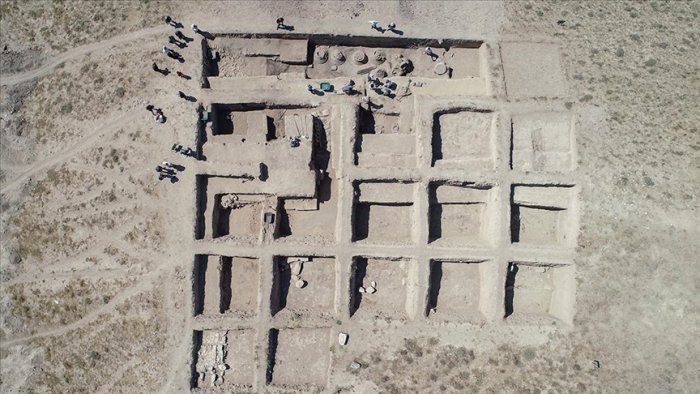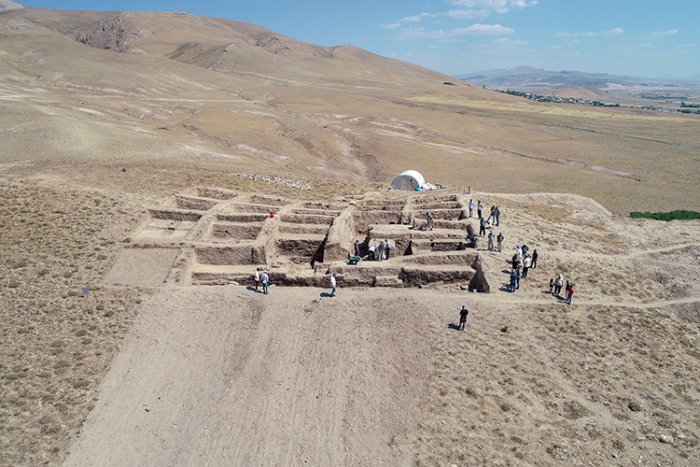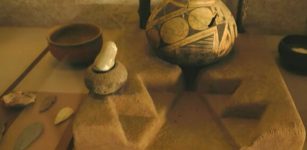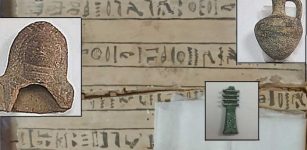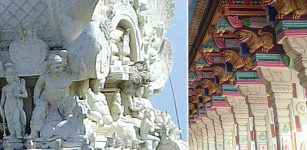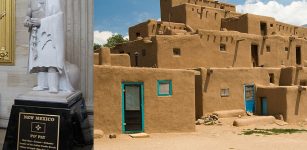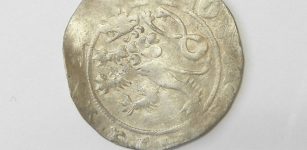What Are The Monumental Uratrian-Era Structures Unearthed At Garibin Tepe In Van?
Jan Bartek - AncientPages.com - A group of impressive monumental ancient structures have been unearthed by archaeologists excavating at Garibin Tepe in Van, Turkey. Scientists say the large building complex is from the Urartian period.
Before it was destroyed, the mysterious Urartu Kingdom was situated near Lake Van and the mountainous plateau between Anatolia, Mesopotamia, the Iranian Plateau, and the Caucasus Mountains.
If this was once a castle, it was an unusual one. Credit: Özkan Bilgin/AA
At present, the purpose of the ancient buildings remains unclear. Garibin Tepe is an interesting archaeological site located not far from the important Ayanis castle, an Urartian site that dates to the 7th century B.C. The area was discovered when treasure hunters carried out illegal excavations last year. Archaeologists have been investigating the region ever since and can confirm the site stood on the main road that joined the capital of Urartu, Van Fortress, with the Muradiye Plain and the Ararat Valley.
Credit: Özkan Bilgin/AA
Scientists said they constantly come across new finds during the work carried out in the field. Unfortunately, this valuable ancient historical site was destroyed due to illegal excavations, so obviously, the researchers must do whatever they can to save artifacts and ancient ruins that are left.
"We encountered a very well-preserved mudbrick architecture. This place still has many question marks. It is difficult to answer whether it is a castle, a settlement, or a private area. But the first indications show that it is a very special place where royal and religious places come to the fore. It may be likened to the Ayanis Castle residential area. It's not a normal castle.
Credit: Özkan Bilgin/AA
We haven't come across a defensive wall yet. On the contrary, architecture with monumental and very special engravings welcomed us. We scanned the area with georadar. We do not know its exact function, but we are faced with a monumental building group with religious and royal dimensions.
Credit: Özkan Bilgin/AA
We have found 13 large pithos so far. We haven't opened them all yet. It is estimated that these pits were used to store grain or water," Mehmet Isikli, the team leader of the scientists who carried out the excavations, told Anadolu Agency (AA).
See also: More Archaeology News
"This is one of the important points of the Urartians, one of the ancient civilizations of Anatolia. The data we have obtained so far shows that this is an important Urartian field. We are planning to take it among the castles such as Ayanis and Çavustepe," Bülent Gönültas, Head of the Department of Museums of the General Directorate of Cultural Heritage Museums, said.
Scientists will continue excavation and preservation works simultaneously. It is a significant historical site that must be preserved for future generations.
Written by Jan Bartek - AncientPages.com Staff Writer

